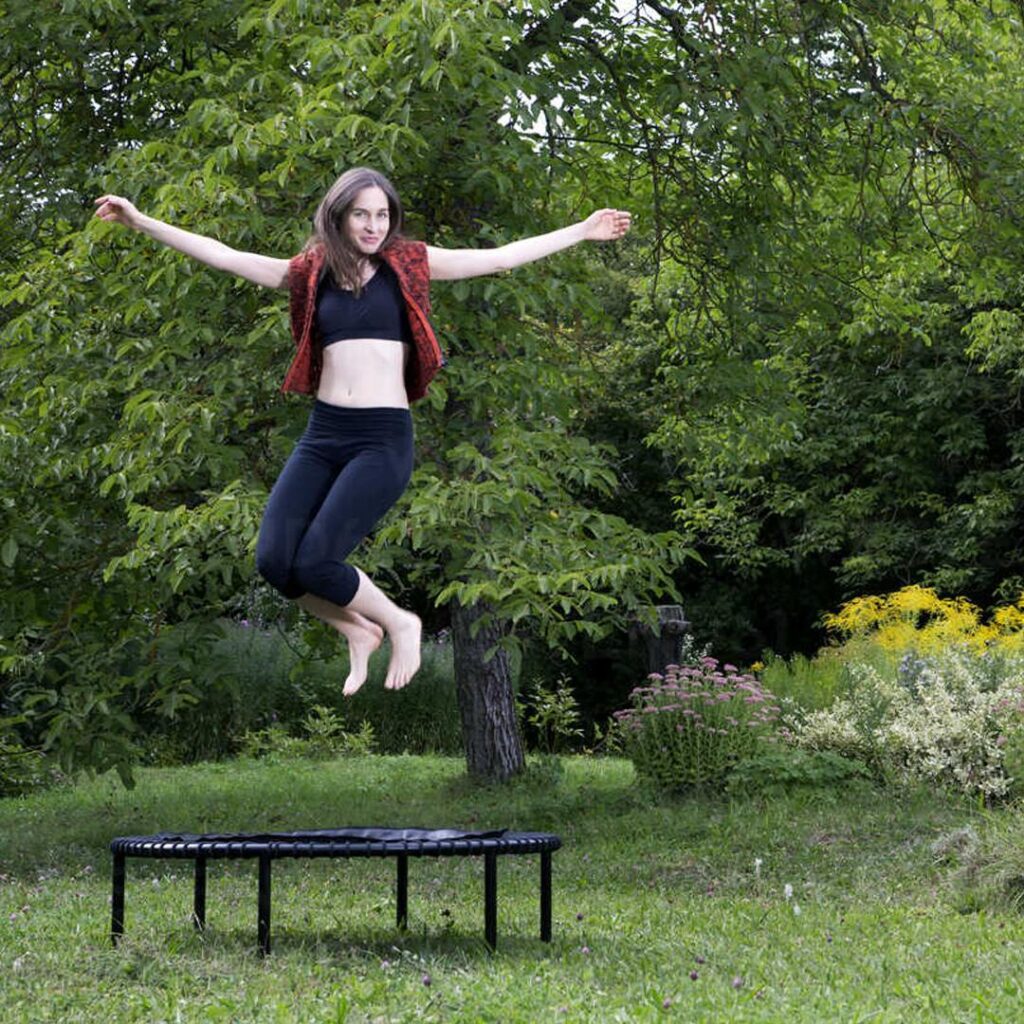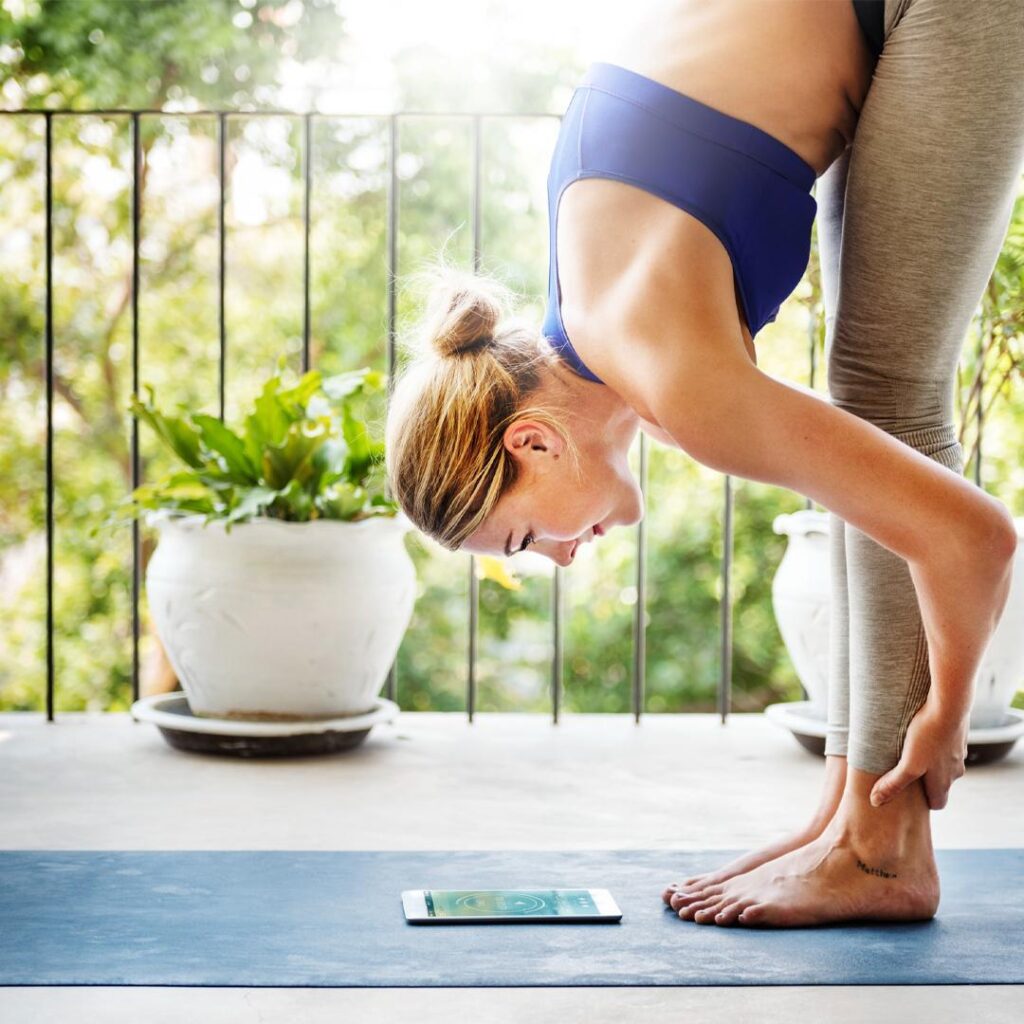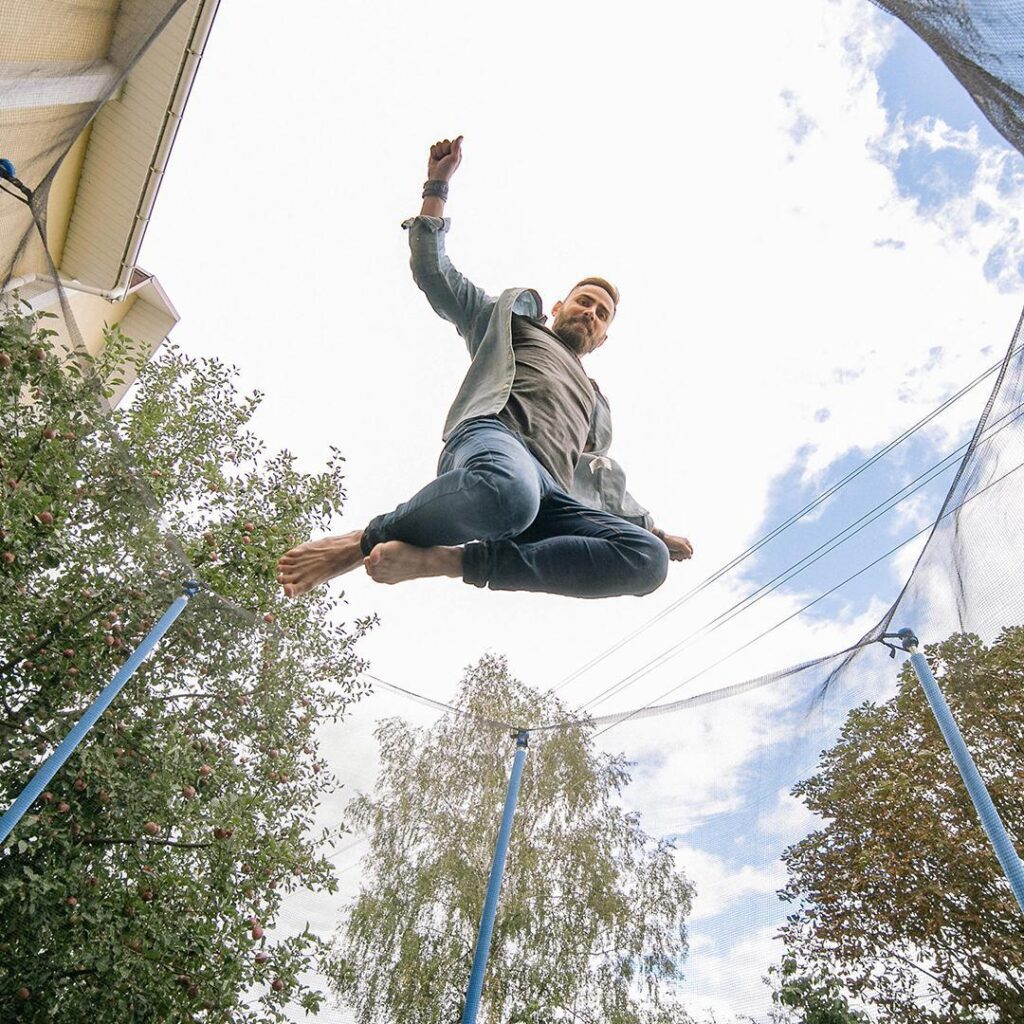The human eye is an incredibly intricate biological organ that can refract light, process it through the ocular nerve, and create images that our brains can comprehend and interpret. It also largely depends on the blood vessels, connective tissues, and muscles that surround the eyes. Sustaining healthy vision is essential for a high standard of living.
Everything from driving and engaging in your favourite activities to reading and working can be impacted by poor eyesight. However, did you know that your lifestyle, particularly what you exercise, can have a big impact on the health of your eyes?

Let’s examine how including trampoline jumping into your daily routine might assist in maintaining the health and sharpness of your eyes.
Whether you’re trying to preserve your vision or looking for new ways to improve your general health, this blog will guide you on how this fun exercise benefits your eyes and offers practical ways to incorporate it into your routine.
Understanding Vision Health
Our eyes are complex and delicate organs that require proper care to function optimally. Here are some basics of eye health and common vision problems:
Basics of Eye Health:

- Anatomy of the Eye: The eye is a remarkably complex structure consisting of several components, each playing a unique role in the visual process. From the cornea and lens, which focus light onto the retina, to the optic nerve, which transmits visual information to the brain, every part contributes to our ability to perceive the world around us.
- Vision Development: Vision is not fully developed at birth but matures gradually over time. During infancy and childhood, exposure to visual stimuli and proper eye care are crucial for the development of clear, healthy vision.
- Nutrition and Eye Health: Like any other part of the body, the eyes benefit from a nutritious diet rich in vitamins, minerals, and antioxidants. Nutrients such as vitamin A, vitamin C, omega-3 fatty acids, and lutein promote eye health and may reduce the risk of age-related vision problems.
- Hygiene and Protection: Practising good hygiene habits, such as regularly washing your hands before touching your eyes, can help prevent eye infections and irritation. Additionally, wearing protective eyewear, such as sunglasses with UV protection, shields the eyes from harmful ultraviolet rays and reduces the risk of conditions like cataracts and macular degeneration.
Common Vision Problems:
- Refractive Errors: Refractive errors, including nearsightedness (myopia), farsightedness (hyperopia), and astigmatism, are the most common vision problems worldwide. These conditions occur when the shape of the eye prevents light from focusing directly on the retina, resulting in blurred vision at various distances.
- Age-Related Eye Conditions: As we age, the risk of developing certain eye conditions increases. Cataracts, which cause clouding of the eye’s lens, affect many older adults and can lead to vision loss if left untreated. Similarly, age-related macular degeneration (AMD) and glaucoma are progressive conditions that can impair central vision and, if untreated, result in permanent vision loss.
- Digital Eye Strain: With the prevalence of digital devices in today’s society, many people experience digital eye strain, also known as computer vision syndrome. Prolonged exposure to screens can cause symptoms such as eye fatigue, dryness, blurred vision, and headaches. Implementing strategies to reduce screen time and practising the 20-20-20 rule—taking a 20-second break every 20 minutes to look at something 20 feet away—can alleviate symptoms and promote eye comfort.
Understanding these basics helps us appreciate the importance of proactive eye care. Just as we take steps to maintain our physical health, incorporating eye-friendly practices, like specific exercises, can significantly enhance our vision health.
The Science Behind Exercise and Vision

General Benefits of Exercise
Being physically active regularly is crucial for preserving general health. Regular exercise not only keeps your body in shape but also offers numerous benefits for your eyes. Here’s how:
- Improved Blood Circulation: Exercise enhances blood flow throughout the body, including the eyes. This increased circulation ensures that the eyes receive more oxygen and essential nutrients, which are crucial for maintaining healthy tissues and optimal function.
- Reduced Risk of Chronic Diseases: Regular exercise can lower the risk of developing chronic conditions such as diabetes and hypertension. These conditions can have adverse effects on eye health, leading to complications like diabetic retinopathy and hypertensive retinopathy.
- Stress Reduction: Exercise helps in reducing stress, which can indirectly benefit eye health. Excessive levels of stress can aggravate eye strain and cause other visual issues.
Now that we’ve explored the general benefits of exercise on overall health and vision, let’s dive into the specific advantages of trampoline jumping and how it uniquely supports eye health.
Specific Benefits of Trampoline Jumping
Trampoline jumping is not only a fun activity but also an effective way to improve vision health. Here’s why:
- Enhanced Blood Flow: Jumping on a sport trampoline stimulates cardiovascular activity, which boosts blood circulation throughout the body, including the eyes. Better blood flow means more oxygen and nutrients are delivered to the eye tissues, promoting their health and functionality.
- Lymphatic System Stimulation: The up-and-down motion of trampoline jumping helps stimulate the lymphatic system, which is responsible for removing toxins from the body. A more efficient lymphatic system can help reduce inflammation and maintain healthier eyes.
- Coordination and Balance: Trampoline jumping improves coordination and balance, which involves the brain and the visual system working together. This coordination can enhance visual skills and perception.
After learning about the amazing advantages of trampoline jumping for eye health, let’s examine how adding even 10 minutes of trampoline jumping to your daily schedule can have a significant effect on your general well-being.
10 Minutes of Trampoline Jumping – A Daily Routine

Incorporating a 10-minute in-ground trampoline jumping routine into your daily schedule is an enjoyable and effective way to support your vision health. Here are some simple routines you can follow:
- Warm-up (2 minutes):
- Start by gently bouncing on the trampoline with both feet.
- Gradually increase the height of your jumps as you warm up your muscles.
- Swing your arms gently to increase circulation.
- Cardio Session (5 minutes):
- Jump continuously on the trampoline, focusing on maintaining a steady rhythm.
- Experiment with different jumping styles such as high jumps, side-to-side jumps, and jogging in place.
- Keep your movements fluid and controlled to avoid injury.
- Cool Down and Stretch (3 minutes):
- Gradually reduce the intensity of your jumps, transitioning into gentle bouncing.
- Perform a series of stretches to relax your muscles and improve flexibility.
- Focus on stretching the legs, back, arms, and shoulders.
Additional Tips:
- Start slowly if you’re new to trampoline jumping, and gradually increase the intensity and duration of your sessions.
- Pay attention to your body’s signals and cease if you feel any pain or discomfort.
- Consider incorporating this routine into your morning or evening routine for consistent practice.
Tips for Safe Trampoline Use

Trampoline jumping is a fun and effective way to improve vision health, but it’s essential to prioritise safety to prevent injuries. Here are some pointers to guarantee a secure time on a trampoline:
- Supervision: When using a trampoline, always have an adult in charge to keep an eye on things, especially if kids are around. An attentive supervisor can quickly respond to any emergencies and ensure that jumpers adhere to safety guidelines.
- Proper Setup: Before using the trampoline, ensure it is set up on a flat, level surface free of debris. Avoid placing the trampoline near obstacles such as trees, fences, or overhead wires, which could pose a risk of collision or entanglement.
- Safety enclosure: Invest in a trampoline with a safety net enclosure to prevent falls and collisions. The safety net provides an added layer of protection by keeping jumpers within the trampoline’s boundaries and reducing the risk of accidents.
- One Jumper at a Time: To minimise the risk of collisions and injuries, only allow one person to jump on the trampoline at a time. Multiple jumpers can disrupt each other’s movements and increase the likelihood of accidents, especially among children.
- No Stunts: Discourage the performance of flips, somersaults, or other aerobatic manoeuvres unless under the supervision of a trained professional. These stunts pose a high risk of injury, including head and neck injuries, and should only be attempted with proper training and safety measures in place.
- Regular Maintenance: Regularly inspect the trampoline for signs of wear and tear, including damaged springs, torn mats, or loose fittings. Replace any damaged parts promptly to maintain the structural integrity of the trampoline and prevent accidents.
- Proper Landing: Encourage jumpers to land with their feet flat on the trampoline surface to reduce the impact on joints and minimise the risk of injury. Landing with bent knees can absorb shock more effectively and reduce strain on the ankles and knees.
- Jumping Surface: Use a trampoline with a shock-absorbent jumping surface, such as high-quality padding or a springless design, to minimise the risk of injury. A cushioned surface can help reduce the impact of jumps and provide added comfort for jumpers.
Additional Advice:
- Encourage participants to warm up before jumping to prevent muscle strains.
- Set time limits for trampoline use to prevent overexertion and fatigue.
By following these safety guidelines, you can enjoy the benefits of trampoline jumping while minimising the risk of injuries.
Conclusion
One thing is evident as we conclude our investigation into the relationship between physical activity and visual health: maintaining the health of our eyes is just as crucial as maintaining the health of the rest of our bodies. Our quest towards improved eyesight and overall wellness has taken us from learning the fundamentals of eye health to learning the unique advantages of trampoline jumping.
Recall that the impact our 10-minute trampoline jump has on our day and our lives goes beyond what happens to us during that time. We are nourishing our visual health in addition to strengthening our bodies by adding this easy exercise into our daily routine. It’s also entertaining and fascinating.
Trampoline jumping can be safe for people of all ages when practised with proper precautions and supervision. However, it’s essential to consider individual health conditions and limitations before engaging in any physical activity. Consult with a healthcare professional if you have any concerns.
While trampoline jumping alone may not directly improve vision, it can contribute to overall eye health by promoting better circulation and lymphatic system function. Additionally, engaging in regular physical activity, including trampoline jumping, supports overall wellness, which can indirectly benefit vision health.
Consistency is key when it comes to reaping the benefits of trampoline jumping for vision health. Aim for at least 10 minutes of trampoline jumping per day to start seeing potential improvements. However, always listen to your body and adjust the frequency and intensity of your workouts accordingly.
While there are no specific exercises designed exclusively for vision health on a trampoline, incorporating a variety of movements, such as jumping, bouncing, and balancing, can stimulate circulation and promote overall wellness, which can positively impact vision health.
If you don’t have access to a trampoline, you can still engage in other forms of physical activity to support your vision health. Activities such as walking, jogging, cycling, and yoga can provide similar benefits for circulation, lymphatic system function, and overall wellness.





